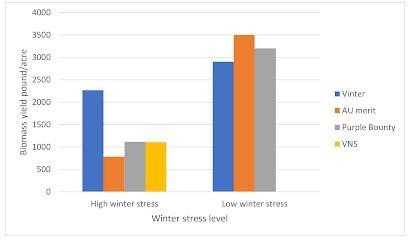By Craig Sheaffer and Nancy Ehlke
Hairy vetch (Vicia villosa Roth) is an annual legume used as a cover crop, green manure crop, and occasionally as a forage. In the Midwest, it is one of the few annual legumes that is used as a winter cover crop because it is moderately winter hardy. As a winter cover crop, hairy vetch can reduce soil erosion and in the spring be used as a green manure crop to add carbon and nitrogen to the soil. Hairy vetch conducts biological nitrogen fixation and can contribute from 50-150 pounds of fixed N to subsequent crops depending on the spring biomass production. Because of its viney prostrate growth habit, it is often planted with winter rye which supports hairy vetch growth.
‘Vinter’ is a new hairy vetch variety with superior winter survival and spring biomass production. It was developed from the most winter-hardy local ecotypes identified in winter survival evaluation across multiple MN environments and winters. Seed from plants surviving severe winters was composited and recurrently selected for high vigor and ground coverage in fall and early spring. Individual plants were also evaluated for biomass at maturity and seed yield.

Figure 1. Spring biomass yields at flowering for Vinter and
other hairy vetch varieties following severe and mild winters.
Results for northern environments of Minnesota, Wisconsin,
Nebraska, and New York.